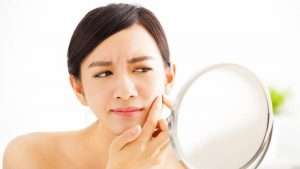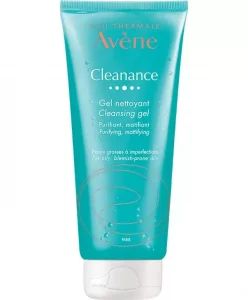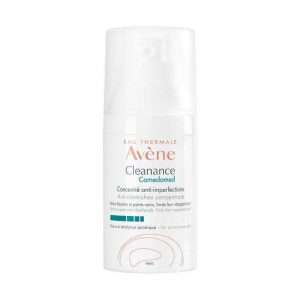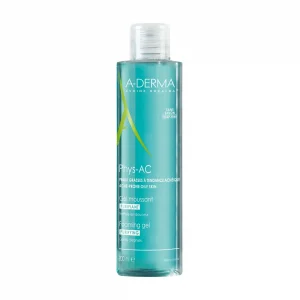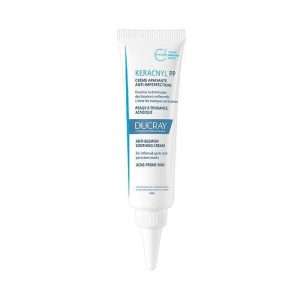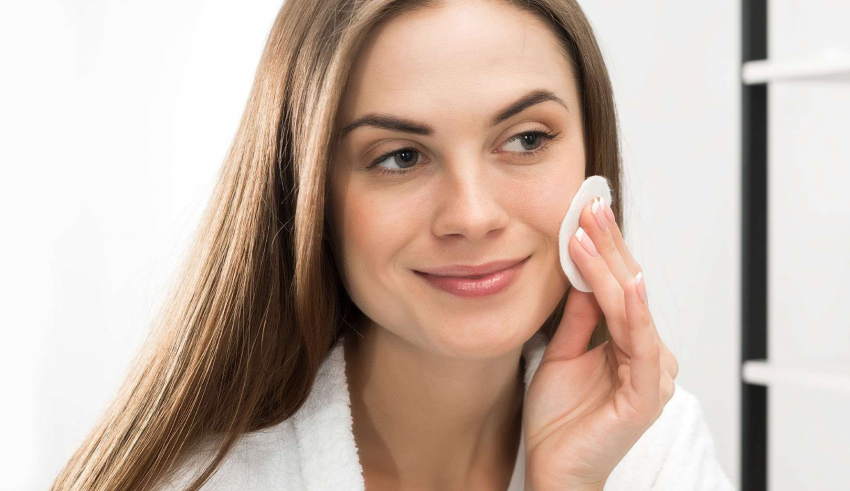
In collaboration with
Dr. Maha Ahmed
Have you ever experienced a stressful time at work or had extra demands knocking on your door? This pressure can sometimes lead to the appearance of a few bumps around your mouth or chin, called mild acne. Mild acne is incredibly common. And even if those little bumps are considered a mild form of acne, they can be annoying especially for teenagers.
Acne flare-ups range from mild and moderate to severe. It is therefore important to know where your acne fits on this scale, as it gives you a good idea on how you should treat it.
In this article from The Dermo Lab, and in collaboration with the dermatologist and cosmetologist Dr. Maha Ahmed, we will review the difference between the different forms of acne (mild, moderate or severe) and discuss the most effective treatment options.
Read on!
First, what are the symptoms of mild acne?
Before we dig into the causes of mild acne, let’s start with the underlying symptoms, which will help you better understand this skin condition.
According to Dr. Maha Ahmed, if you suffer from mild acne, your skin can sometimes show papules and comedones.
- Papules: Papules look like small pimples or bumps on the skin. They have no visible pus.
- Comedones: Blackheads and whiteheads are the most common forms of comedones. But they don’t cover much of your face, chest, shoulders, upper arms, or back.
Dr. Maha Ahmed adds that if you have mild acne, you are less likely to have scars. But keep in mind that scars can appear if you try to pop your pimples.
More severe forms of acne can involve more areas and cause more lesions. As Dr. Maha Ahmed explains, moderate acne includes pustules with a bacterial infection. Pustules are red, inflamed pimples with white tops indicating that there is pus on the inside. As for severe acne, it is characterized by large inflamed lesions and may leave scars.
Second, what causes mild acne?
There are many potential causes of acne, but mild acne usually begins at puberty, when the hormone levels begin to rise with the increased production of sebum.
Mild acne can have one or more causes.
- Excess of androgens, which are male sex hormones. This may be related to conditions such as polycystic ovarian syndrome.
- Emotions. Depression, anxiety, and stress can all affect your skin.
- Poor nutrition. A diet rich in high-glycemic foods can affect your skin.
- Dairy products. In some cases, drinking milk can cause acne.
- The use of oily or pore-clogging substances. Common products that can cause mild acne on the forehead are oils used on the scalp or hair cream.
- Hormonal changes. These often occur during puberty and pregnancy.
Third, what is mild acne treatment?
Mild acne is generally the easiest type of acne to control and can respond to over-the-counter treatments. The above-mentioned factors will help you prevent flare-ups, but what if your skin breaks out all of a sudden?
Good news Dr. Maha Ahmed puts forward many ways to treat mild acne, such as comedo extraction, mild peeling, the use of cleansers specifically designed for oily skin, and products containing salicylic acid.
Below, we will discuss key aspects of these 4 methods:
1- Comedo extraction: Comedo extraction is a widely used method for mild acne treatment. A dermatologist or cosmetologist can extract blackheads (open comedones) by using gentle pressure around the pore opening, and whiteheads (closed comedones) by incision with a large needle or blade.
2- Mild peeling: Superficial peels that produce limited damage to the epidermis are effective for mild to moderate acne.
3- Skin cleansers: Regular face washing with a gentle cleanser designed for oily skin will cleanse and purify your skin, unclog your pores, and reduce the appearance and severity of acne.
We recommend you try the Cleanance Cleansing Gel from Eau Thermale Avène, the leading brand in the skin care field. This product is specially designed for oily blemish-prone skin. It reduces impurities and excessive sebum production while keeping the skin well hydrated. So, keep using it morning and evening each day.
After cleansing and purifying your skin with the gel, use the Cleanance Comedomed, a cream designed to fight pimples and blackheads. This new-generation skin care product improves the quality of the skin over the long term. Imperfections are reduced, the skin is mattified during the day, and pores are tightened. We recommend applying it all over your face twice a day for optimal results.
If you are looking for 100% natural ingredients, we recommend Phys-Ac Purifying Foaming Gel from A-Derma, the world-renowned brand for its plant-based active ingredients. This facial cleansing gel is suitable for the daily hygiene of combination, oily and acne-prone skin. Enriched with Rhealba® oat plant extract, which rebalances and calms the skin, and glutamic acid, which helps stabilize the skin’s pH, this ultra-light formula cleanses the skin without drying it out. The skin comes out refreshed and mattified, with a radiant softness and suppleness.
Used in conjunction with this cleanser, A-Derma Phys-AC Global is a complete skin care product that removes excess oil and limits bacterial adhesion. Not only does this product soothe and minimize redness due to irritation, it also exfoliates and removes deposits from pores.
Now if you’re looking for a soap-free cleanser that purifies the skin and reduces pimples, Keracnyl foaming gel from Ducray is your go-to cleanser. It helps eliminate blackheads and pimples by cleansing deeply your skin without the use of aggressive ingredients.
Used in tandem with this cleanser, Ducray Keracnyl PP Anti-Blemish Soothing Care, is a soothing cream adapted to the daily care of acne-prone skin. Enriched with myrtacine, this cream reduces pimples, soothes redness and irritation caused by acne treatments, and gives the skin a hydrated look. Try it out and enjoy an acne-free skin after 7 days of use only!
4- Products containing salicylic acid: People with mild acne can rely on treatments that help regulate sebum production and reduce bacteria, inflammation, and keratosis. These may include salicylic acid, azelaic acid, or topical antibiotics such as erythromycin or clindamycin.
In fact, patience is the key to fighting acne! Always remember that most medications do not cure acne overnight and you must be patient with the results. Dr. Maha Ahmed points out that mild acne can last from one to three months.
In summary
You may have mild acne, regardless of your age or skin type. Many girls and women suffer from the appearance of pimples on the face at some stage of their lives, and of course, it affects their psyche and the beauty of their skin.
Keep in mind that, according to experts, if mild acne is left untreated, it can develop into a more severe type of acne. First, pimples appear as comedones, as has been said, which are blackheads and whiteheads and if untreated, they could turn into red pimples or even cystic nodules.
If mild acne does not go away, or if it gets worse or starts to leave scars, consult your dermatologist!
Last Updated on April 16, 2024
